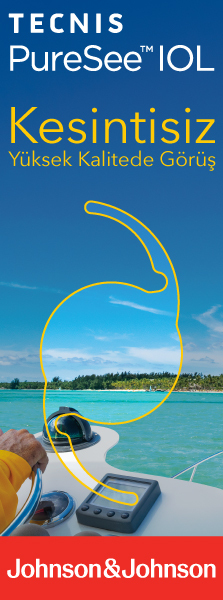Retina-Vitreous
2009 , Vol 17 , Num 4
Comparison of Optical Coherence Tomography Findings of Primary and Secondary Epiretinal Membranes
1Beyoğlu Göz Eğitim ve Araştırma Hastanesi İstanbul, Uz. Dr.2Beyoğlu Göz Eğitim ve Araştırma Hastanesi İstanbul, Prof. Dr.
3Baskent Üniversitesi Hastanesi Göz Hastalıkları Servisi İstanbul, Uz. Dr. Purpose: To compare the optical coherence tomography (OCT) findings of primary and secondary epiretinal membranes (ERMs).
Mateials and Methods: OCT was performed on 129 eyes of 172 consecutive patients (66 males, 63 females) with fundoscopic evidence of ERMs. Adherence characteristics, macular thickness, loss of foveal contour, edge/tuft visibility, pseudohole or lamellar hole formation, vitreomacular traction,intraretinal cystic formation, foveal cyst and exudate, nonadherence, surface irregularity and schisislike detachment in OCT were evaluated. OCT findings, age and visual acuity of primary (n=63) and secondary (n=109) ERM groups were compared statistically.
Results: The mean age was 68.3±7.0 in primary ERM group and 62.8±11.1 in secondary ERM group (p=0.001). The mean visual acuity was 0.6±0.3 in primary ERM group and 0.4±0.3 in secondary ERM group (p<0.001). Central macular thickness was 324.9±88.8 μ in primary ERM group and 340.5±127.3 μ in secondary ERM group (p=0.39). The pattern of membrane attachment to the retina was not significantly different in between two groups (p>0.05). Significant differences were found between the two groups for the parameters of vitreomacular traction, intraretinal cystic formation, foveal cyst and subretinal exudation (p<0.05).
Conclusion: Secondary ERMs may be seen at a younger age than primary ERMs. Visual prognosis is limited in cases with secondary ERM. Secondary ERMs may show different OCT findings than primary ERMs according to the underlying pathology. Keywords : Primary epiretinal membrane, secondary epiretinal membrane, optical coherence tomography





